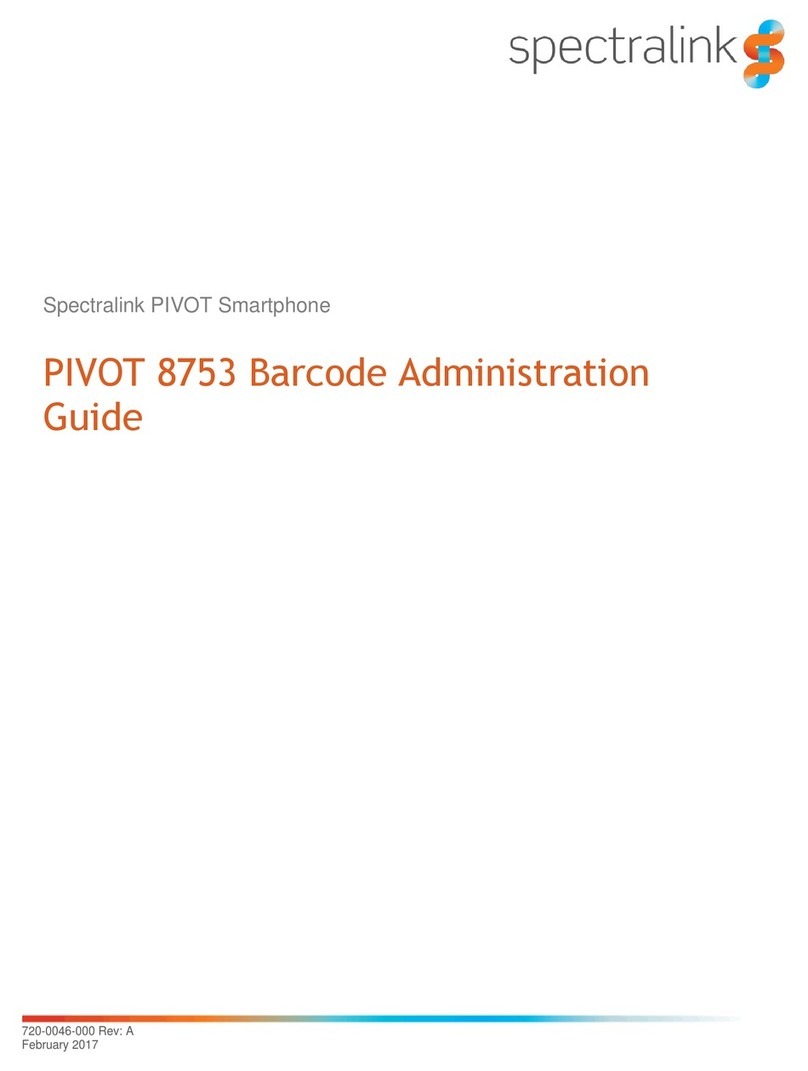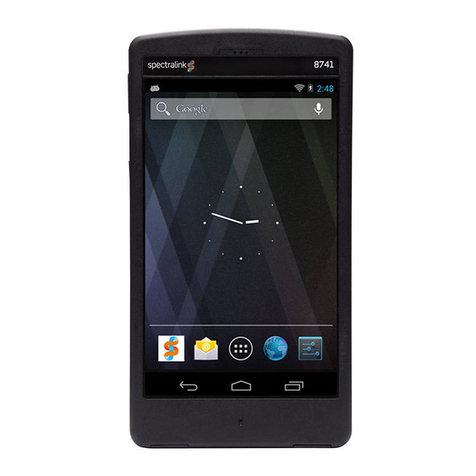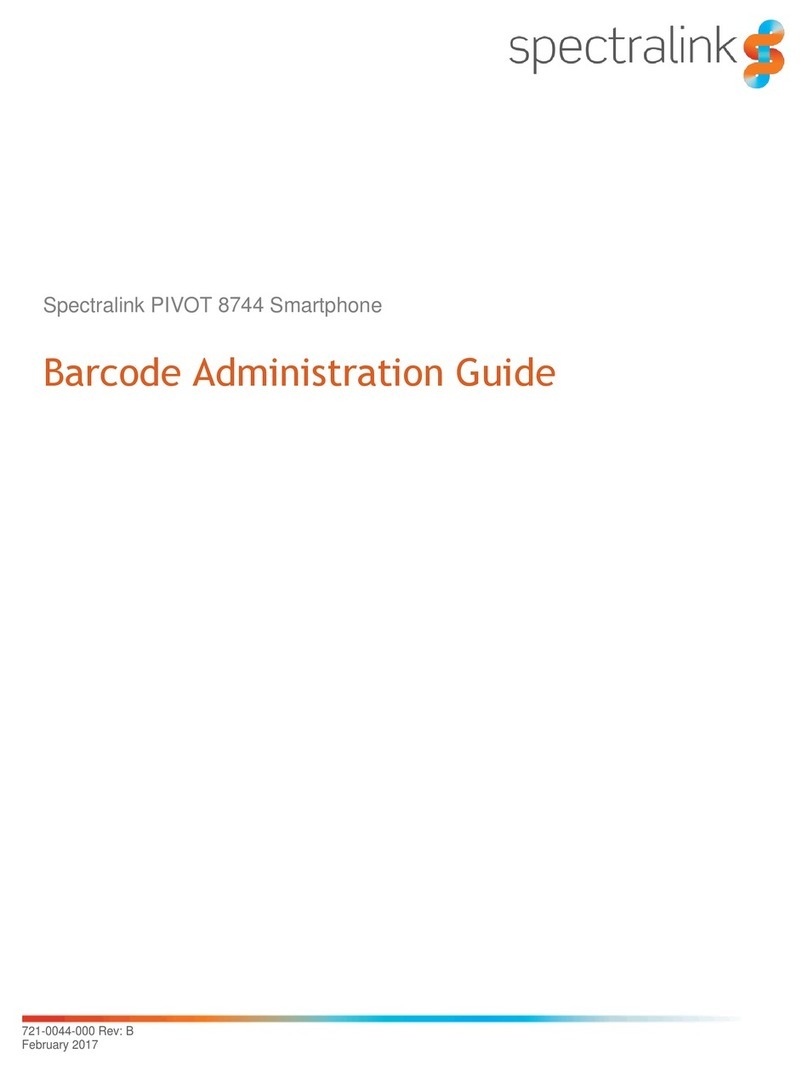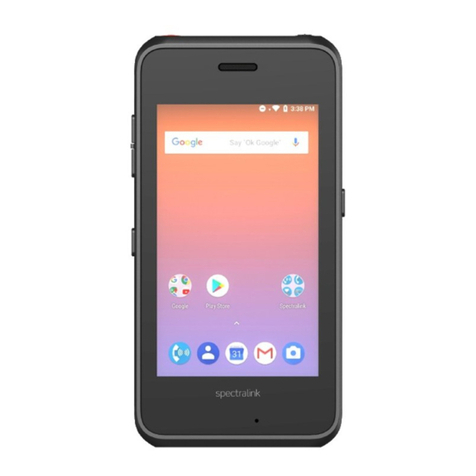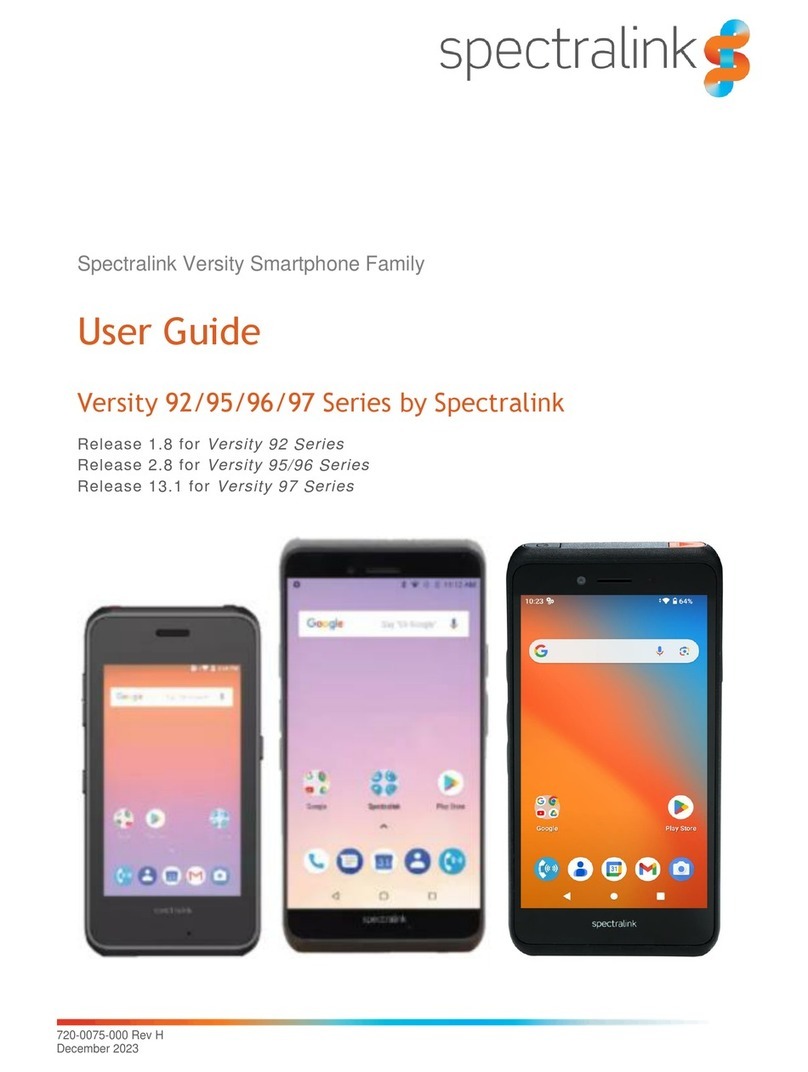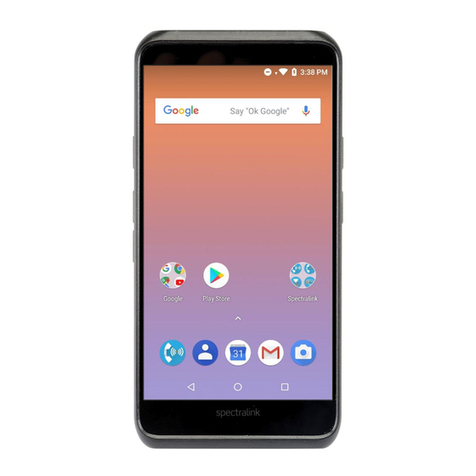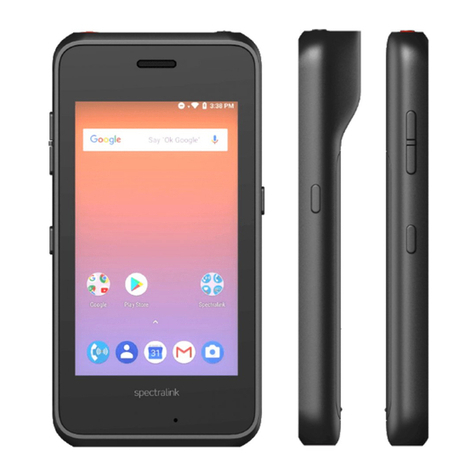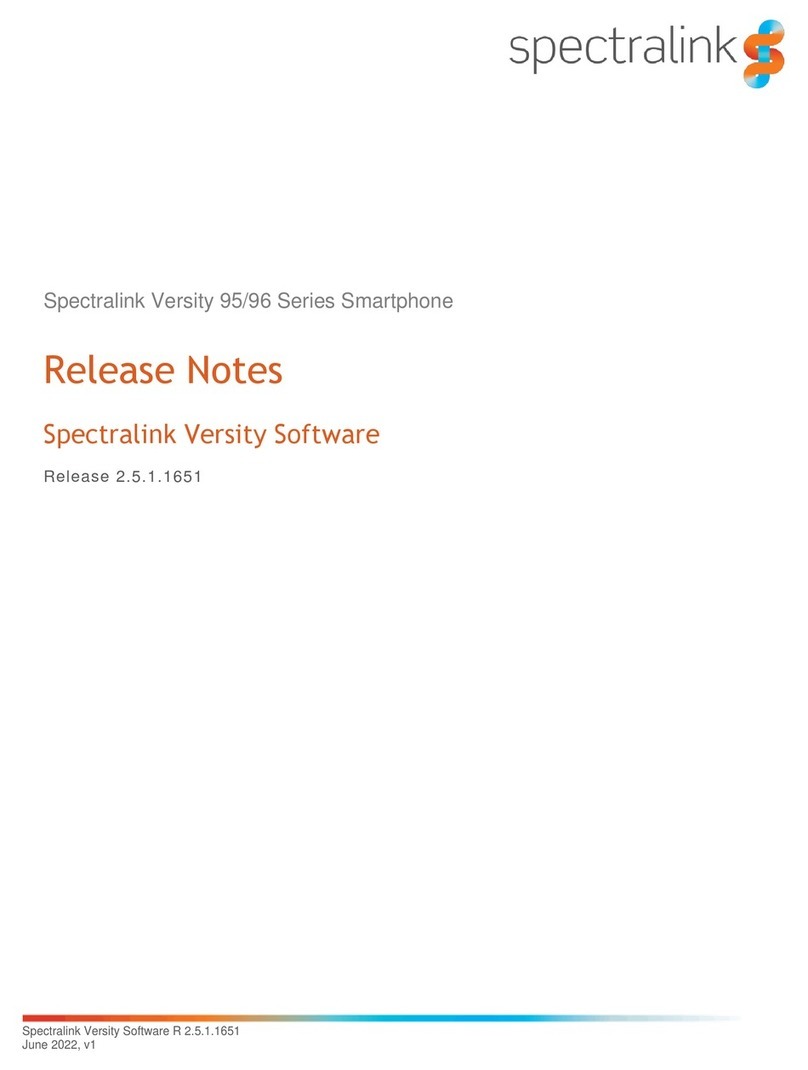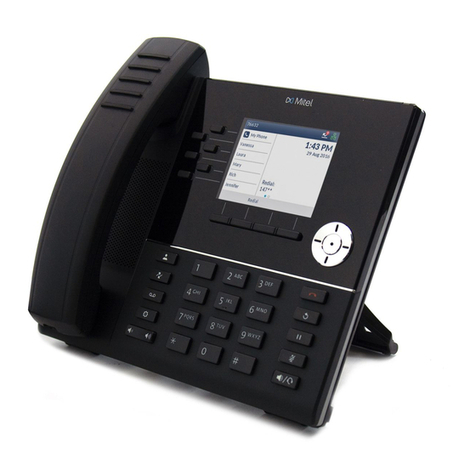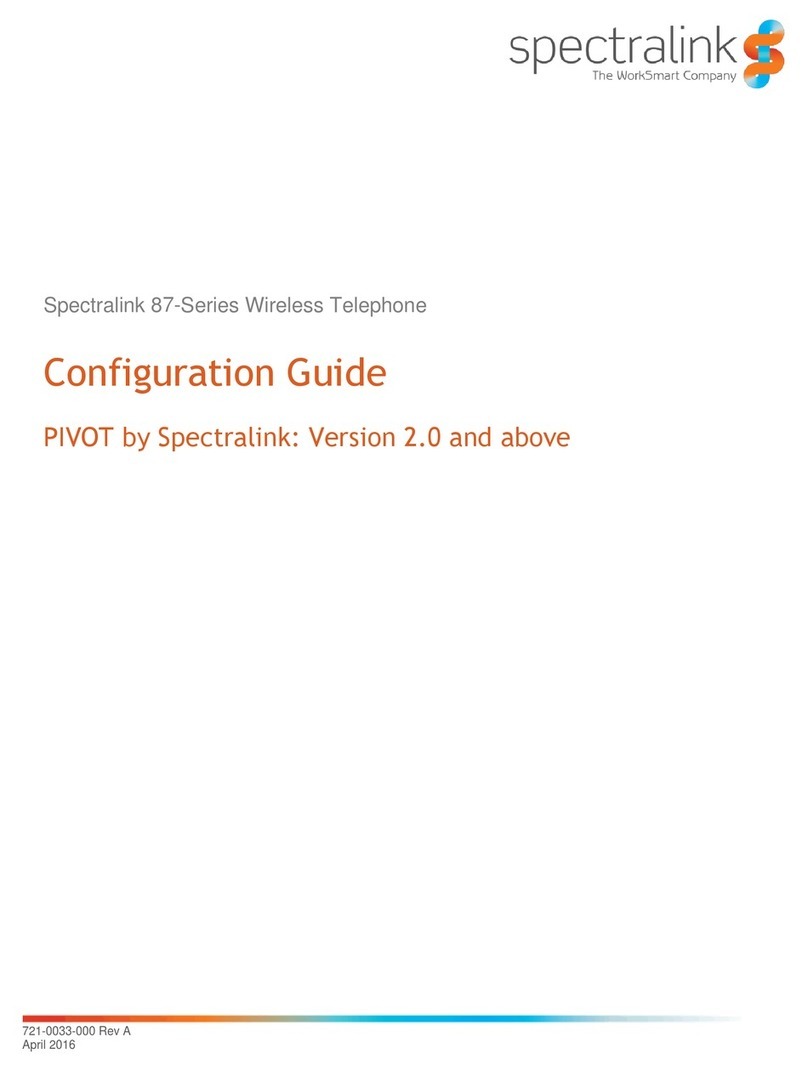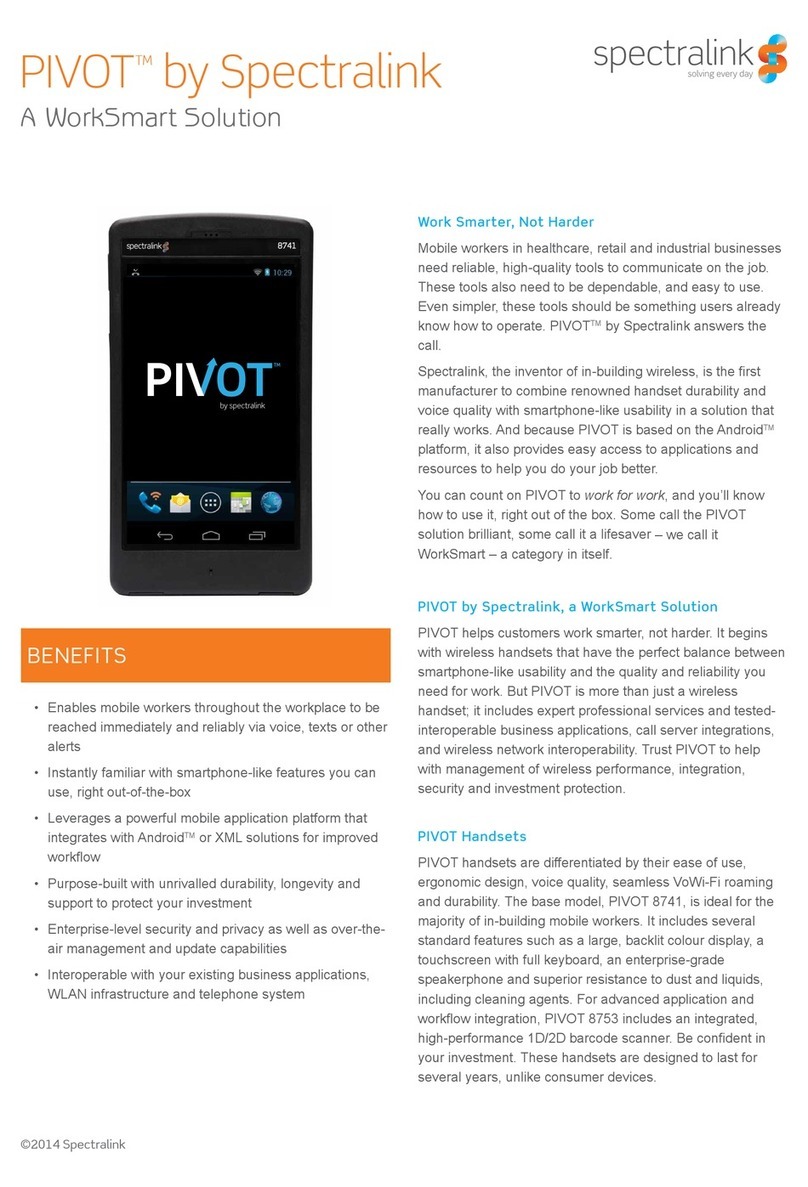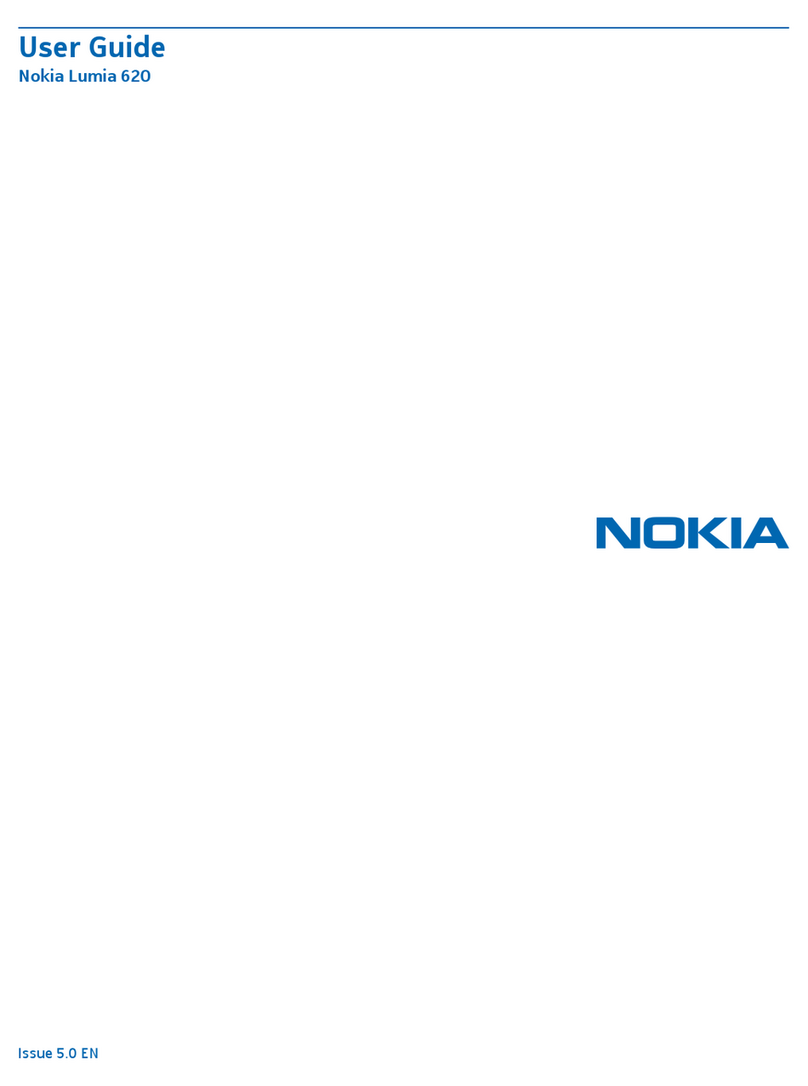
For more information about the handset, refer to the user guide available for download at www.spectralink.com
This equipment generates, uses and
can radiate radio frequency energy and,
if not installed and used in accordance
with the instructions, may cause harmful
interference to radio communications.
However, there is no guarantee that
interference will not occur in a particular
installation. If this equipment does cause
harmful interference to radio or television
reception, which can be determined
by turning the equipment off and on,
the user is encouraged to try to correct
the interference by one or more of the
following measures:
• Reorient or relocate the receiving
antenna.
• Increase the separation between the
equipment and receiver.
• Connect the equipment into an outlet on
a circuit different from that to which the
receiver is connected.
• Consult the dealer or an experienced
radio/TV technician for help.
FCC Note
This device complies with part 15 of the
FCC rules. Operation is subject to the
following two conditions: (1) This device
may not cause harmful interference,
and (2) this device must accept any
interference received, including
interference that may cause undesired
operation.
Modications not expressly approved
by this company could void the user’s
authority to operate the equipment.
FCC ID:
Spectralink 7202/7212: PXA-K023B
SAR
These devices have been tested for SAR
compliance.
Spectralink 7202: 0.064 W/kg.
Spectralink 7212: 0.064 W/kg.
IC Note
Operation is subject to the following
two conditions: (1) This device may not
cause interference, and (2) this device
must accept any interference, including
interference that may cause undesired
operation of the device.
The Term “IC“: before the certication/
registration number only signies that the
Industry Canada technical specications
were met.
Privacy of communications may not be
ensured when using this telephone.
The Class [B] digital apparatus complies
with Canadian ICES-003.
Spectralink 7202/7212: 4604A-K023B.
Power Outage
In the event of a power outage, your
wireless telephone will not operate. The
wireless telephone requires electricity for
operation. You should have a telephone
which does not require electricity available
for use during power outages.
Information to user
The users manual or instruction manual
for an intentional or unintentional radiator
shall caution the user that changes or
modications not expressly approved by
the party responsible for compliance could
void the user’s authority to operate the
equipment.
EMC Cautions
Users should not attempt to make such
connections themselves, but should
contact the appropriate electric inspection
authority, or electrician, as appropriate.
If your telephone equipment causes harm
to the telephone network, the telephone
company may ask you to disconnect the
system from the line until the problem has
been corrected or they may discontinue
your service temporarily. If possible, they
will notify you in advance, But if advance
notice is not practical, you should be
notied as soon as possible. You will be
informed of your right to le a complaint
with the FCC.
Your telephone company may make
changes in its facilities, equipment,
operations, or procedures that could
affect the proper functioning of your
telephone system, If they do and it is
possible, you will be notied in advance
to give you an opportunity to maintain
uninterrupted telephone service. If you
experience trouble with this telephone
system, disconnect it from the network
until the problem has been corrected or
until you are sure that the equipment is not
malfunctioning.
Note: This equipment has been tested
and found to comply with the limits for a
class B digital device, pursuant to local
regulations. These limits are designed
to provide reasonable protection against
harmful interference in a residential
installation.
Notices
Before installing this equipment, users
should ensure that it is permissible to
be connected to the facilities of the
local telecommunications company. The
equipment must also be installed using
an acceptable method of connection.
The customer should be aware that
compliance with the above conditions may
not prevent degradation of service in some
situations.
Repairs to certied equipment should
be coordinated by a representative
designated by the supplier. Any repairs
or alterations made by the user to this
equipment, or equipment malfunctions,
may give the telecommunications
company cause to request the user to
disconnect the equipment.
Users should ensure for their own
protection that the electrical ground
connections of the power utility, telephone
lines and internal metallic water pipe
system, if present, are connected together.
This precaution may be particularly
important in rural areas.

